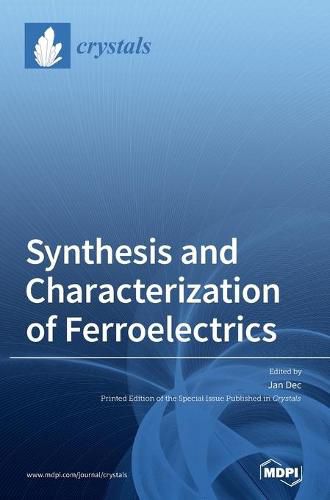Readings Newsletter
Become a Readings Member to make your shopping experience even easier.
Sign in or sign up for free!
You’re not far away from qualifying for FREE standard shipping within Australia
You’ve qualified for FREE standard shipping within Australia
The cart is loading…






This title is printed to order. This book may have been self-published. If so, we cannot guarantee the quality of the content. In the main most books will have gone through the editing process however some may not. We therefore suggest that you be aware of this before ordering this book. If in doubt check either the author or publisher’s details as we are unable to accept any returns unless they are faulty. Please contact us if you have any questions.
The Special Issue on Synthesis and Characterization of Ferroelectrics reports on several physical properties of ferroelectric materials and their technological aspects. Different substitution mechanisms provide ideas toward future improvement of lead-free (Ba, Ca)(Zr, Ti)O3 piezoelectric ceramics, including the electrocaloric effect, fluorescence, and energy storage. It is established that axial and radial element segregation differently influences electrical properties of 0.68Pb(Mg1/3Nb2/3)0.32PbTiO3 (PMN-32PT for short) single crystals. While the electrical properties along the axial direction strongly depend on the PbTiO3 content, the electrical properties along the axial direction are mainly determined by the ratio of Nb and Mg. On the other hand, Fe-substitution of PMN-32PT crystals lead to an enhancement of the coercive field due to wall pinning induced by charged defect dipoles. It is also found, that capacitors based on Pt/Na0.5Bi0.5TiO3/La0.5Sr0.5CoO3 thin films display good fatigue resistance and retention. Another lead-free thin film capacitor fabricated from Ba0.3Sr0.7Zr0.18Ti0.82 features a low leakage current density and high breakdown strength. Such capacitors are essential for energy storage. Furthermore, an enhanced electrocaloric effect on 0.73Pb(Mg1/3Nb2/3)0.27PbTiO3 single crystals is demonstrated. This effect is promising for novel solid-state cooling systems.
$9.00 standard shipping within Australia
FREE standard shipping within Australia for orders over $100.00
Express & International shipping calculated at checkout
Stock availability can be subject to change without notice. We recommend calling the shop or contacting our online team to check availability of low stock items. Please see our Shopping Online page for more details.
This title is printed to order. This book may have been self-published. If so, we cannot guarantee the quality of the content. In the main most books will have gone through the editing process however some may not. We therefore suggest that you be aware of this before ordering this book. If in doubt check either the author or publisher’s details as we are unable to accept any returns unless they are faulty. Please contact us if you have any questions.
The Special Issue on Synthesis and Characterization of Ferroelectrics reports on several physical properties of ferroelectric materials and their technological aspects. Different substitution mechanisms provide ideas toward future improvement of lead-free (Ba, Ca)(Zr, Ti)O3 piezoelectric ceramics, including the electrocaloric effect, fluorescence, and energy storage. It is established that axial and radial element segregation differently influences electrical properties of 0.68Pb(Mg1/3Nb2/3)0.32PbTiO3 (PMN-32PT for short) single crystals. While the electrical properties along the axial direction strongly depend on the PbTiO3 content, the electrical properties along the axial direction are mainly determined by the ratio of Nb and Mg. On the other hand, Fe-substitution of PMN-32PT crystals lead to an enhancement of the coercive field due to wall pinning induced by charged defect dipoles. It is also found, that capacitors based on Pt/Na0.5Bi0.5TiO3/La0.5Sr0.5CoO3 thin films display good fatigue resistance and retention. Another lead-free thin film capacitor fabricated from Ba0.3Sr0.7Zr0.18Ti0.82 features a low leakage current density and high breakdown strength. Such capacitors are essential for energy storage. Furthermore, an enhanced electrocaloric effect on 0.73Pb(Mg1/3Nb2/3)0.27PbTiO3 single crystals is demonstrated. This effect is promising for novel solid-state cooling systems.